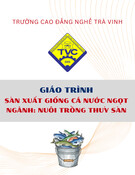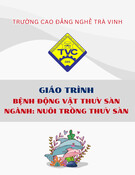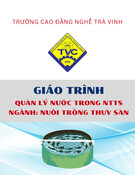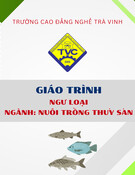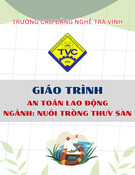
Vietnam Journal
of Agricultural
Sciences
ISSN 2588-1299
VJAS 2020; 3(4): 892-902
https://doi.org/10.31817/vjas.2020.3.4.12
892
Vietnam Journal of Agricultural Sciences
Received: May 7, 2020
Accepted: November 9, 2020
Correspondence to
datb@vnua.edu.vn
A Review of Cunninghamia lanceolata
(Lamb.) Hook: A Recent Update and
Potential Application in Vietnam
Tran Binh Da1 & Le Thi Ngoc Ha2
1Faculty of Agronomy, Vietnam National University of Agriculture, Hanoi 131000,
Vietnam
2PhD student of Vietnamese Academy of Forest Sciences, Hanoi 130500, Vietnam
Abstract
By reviewing worldwide literature, this paper aimed to systematically
collate available information about the species Cunninghamia
lanceolata. Based on the findings of the review, including the
species’ floral characteristics; updated distribution; historical
knowledge and heritage; growth and factors influencing its forests;
soil nutrition and microbes; carbon storage; wood; and chemicals and
essential oils, we have identified issues for consideration regarding
the use of this species for big timber production in Vietnam. We
propose that it is suitable for a range of applications: for small or large
timber plantations, mono/mixed plantations, and agroforestry. If
planted at lower altitudes or warmer temperatures, its growth is likely
to be improved, but seed production may be less successful.
Cultivation of this species for big timber production should be
undertaken according to silviculture best practices, ensuring good
seed quality, a suitable stand density, and appropriate fertilization
thinning strategies, in support of government policies and in
accordance with current science and technology.
Keywords
C. lanceolata var. lanceolata, C. lanceolata var. konishii, forest,
oil, timber
Introduction
Woody products are always in high demand in worldwide
markets and are linked to the forestry sector which exploits timber
from both natural and plantation forests. In the context of climate
change, sustainable timber production and forest development are
increasingly important at both national and global scales. While a
recent 'boom' in the wood processing industry in Vietnam is a positive
signal for economic development in this sector, it has also highlighted
sustainability issues due to the imbalance between timber plantation
productivity and processing capacity. Following decades of depletion

Tran Binh Da & Le Thi Ngoc Ha (2020)
https://vjas.vnua.edu.vn/
893
of natural forests, the development of big timber
plantations has not been sufficient to keep pace
with demand. While about 40 million cubic
metres of equivalent round wood volume is
required by the processing industry annually
(Itto, 2019), timber plantation development has
not yet met the target of 290,000 ha (Vietnam
Gov, 2017), and only 40,000 cubic metres of
legal raw timber is being provided annually by
domestic forests (VOV, 2017).
Of the fourteen big trees included in
legislation (namely Eucalyptus camaldulensis,
Eucalyptus hybrid, Eucalyptus urophylla,
Dipterocarpus alatus, Acacia mangium, Acacia
auriculiformis, Acacia hybrid, Mangletia
conifera, Cunninghamia lanceolata, Hopea
odorata, Pinus massoniana, Pinus kesiya,
Melaleuca leucadendra, and Melaleuca
cajuputi), only six are native species (MARD,
2018), one of which is C. lanceolata. However,
the current understanding of C. lanceolata and
other native species for big timber plantations is
seriously limited.
Before the 1990s, a large area of natural C.
lanceolata was explored for big timber in the
Northern regions of Vietnam, but growers and
researchers were not interested in this species. As
such, research results and published literature
regarding C. lanceolata are very poor. Therefore,
this review has investigated worldwide literature
to systematically collate information that will
significantly improve the understanding of this
species for study, research, and its application for
timber production in Vietnam.
Worldwide overview
Classification of C.
lanceolata
Commonly called Chinese fir in English, this
species is currently distributed naturally in the
sub-tropical regions of China. Older records
indicate that it was previously also naturally
occurring in Vietnam and Laos, and refer to it
with the scientific names Cunninghamia
lanceolata (Lamb.) Hook. (Wcsp, 1827),
Cunninghamia konishii (Wcsp, 1908), and
Cunninghamia lanceolata var. konishii (Wcsp,
1932). Karyotype tests revealed that
Cunninghamia konishii, Cunninghamia
lanceolata, and Taiwania cryptomerioides were
all members of Taxodiaceae (Schlarbaum &
Tsuchiya, 1984; Chung et al., 2004). In Vietnam,
it is called "Samoc" or "Samu" and currently
exists in two varieties, namely C. lanceolata
(Lamb.) Hook. var. lanceolata and C. lanceolata
(Lamb.) Hook. var. konishii (Hayata) Fujita
(Pham et al., 2013). Particularly, C.
lanceolata var. konishii was recently reviewed
and recorded as one of 33 species, 2 subspecies,
and 5 varieties of native conifers belonging to 5
families and 19 genera found in Vietnam (Phan
et al., 2017).
Distribution and adaptation to climate change
of C.
lanceolata
Recently, Chinese fir was recorded
occurring as an introduced plant in many
countries around the world (Figure 1), and used
mostly for landscaping and horticulture. Outside
of China, there are several academic records
concerning this species with regard to
commercial plantations (e.g. in New Zealand
(Fung, 1993b; Fung, 1993a); and in Brazil
(Heinsdijk, 1972; Wadsworth, 1997)).
In Vietnam, natural populations of C.
lanceolata var. konishii were previously found at
Tay Con Linh in Ha Giang Province, Xuan Lien
in Thanh Hoa Province, and Pu Hoat, Phu
Huong, and Pu Mat in Nghe An Province
(Vietnam Plant Data Center, 2009).
To determine whether the distribution and
productivity of C. lanceolata is being affected as
a result of climate change, the research team of
Lu et al. (2015) applied process-based growth
models to predict its distribution and
productivity. The results indicated a northward
shift from the tree’s current range. The growth
model also revealed minor increases in
productivity in some of the existing distribution
areas, particularly in central China, and attributed
this to the warmer climate (Lu et al., 2015). Other
similar results also suggest that climate change
will lead to a modest increase in long-term stem
wood biomass production (6.1% to 12.1%
increase after 30 to 60 years). Thus, climate
change could have a positive impact because of
both a lengthening of the growing season and an

A review of Cunninghamia lanceolate (Lamb.) Hook: A recent update and potential application in Vietnam
894
Vietnam Journal of Agricultural Sciences
Figure 1. Distribution map of C. lanceolata around the world
Source: Farjon (2010)
increase in nutrient-cycling rates, likely
contributing to the increasing growth rate of the
species’ trees (Kang et al., 2017).
History and heritage of C.
lanceolata
Open-pollinated seeds were tested for
allozyme polymorphisms at 24 loci to assess the
genetic diversity and multilocus associations in
16 populations of C. lanceolata. The results
revealed that population subdivision, the founder
effect, occurrences across diverse environments,
a mating system dominated by inbreeding, and
historical events from 2000 years of cultivation
in China were likely factors in the generation and
maintenance of the multilocus genetic structure
in this conifer species (Yeh et al., 1994).
A record indicated that traditional Chinese
afforestation and reforestation systems using C.
lanceolata seedlings grown from rooted cuttings
have been widely implemented for at least 800
years. In addition, vast local knowledge of how
best to grow this species has been passed down
through many generations, establishing
successful methods of extensive site preparation,
wide spacing, interplanting with crops, planting
in mosaics of small-family or clonal blocks,
small-block clear-cut harvesting, and
regenerating with cuttings, stecklings, and stump
sprouts (Minghe & Ritchie, 1999).
In Vietnam, C. lanceolata var. konishii
grows naturally in Pu Hoat Nature Reserve, Nghe
An Province, located at 19o52' N, 104o56' E
(Nguyen Danh Hung et al., 2017). Here there are
still existing populations with very big trunks,
including one Heritage Tree recorded with a
diameter at breast height (DBH) of 540cm and a
height of 70m, estimated to be about 2000 years
old (Nguyen Dinh Vo, 2017).
Growth and factors affecting C. Lanceolata
forests
Worldwide, dozens of literature articles have
been published in English, recording the results
of studies on the growth and factors impacting C.
lanceolata plantations/forests undertaken by
Chinese scientists. A study on the early
regeneration stages of two major coniferous
species (P. massoniana and C. lanceolata) in a
secondary mixed coniferous plantation explained
that C. lanceolata was likely to deliver better
growth of the main stem when it was shaded
(Cheng et al., 2011). Furthermore, a report
indicated that the germination of C. lanceolata
seeds is poor in natural regeneration, possibly
due to low light and a thick litter layer. Research
to investigate how to improve the species’ natural

Tran Binh Da & Le Thi Ngoc Ha (2020)
https://vjas.vnua.edu.vn/
895
regeneration capacity revealed that seedling
emergence was highest at 5-15% sunlight,
whereas seedling height, root length, root mass,
stem mass, leaf mass, and total mass were
greatest at 60% sunlight and that thinning
significantly increased the success of natural
regeneration (Liu et al., 2018).
In natural ecosystems, many factors interact
to impact individual or/and populations of plants.
Dozens of studies have been conducted to
investigate the factors influencing C. lanceolata
forests. First, increased mean temperatures were
shown to promote better growth performance of
C. lanceolata populations, which then exhibited
the greatest germination capacity. C. lanceolata
within the southern population were better
adapted to extremely high temperatures than
specimens from the northern region population
(Zhou et al., 2016). Second, topography
influenced the dominant stand height of C.
lanceolata, with elevation being the most
significant factor, followed by soil type, aspect,
and slope (Zhu et al., 2019). Third, the structural
characteristics of the tree crowns of C.
lanceolata were such that leaf biomass increased
with the crown thickness (Xu et al., 2019), and
that related to thinning due to the effects of
photosynthesis which is dependent on needle-
leaf age (Li et al., 2017). The self-thinning
exponents of C. lanceolata changed
systematically with the mortality rate classes,
and −1.5 was a transitory value in the course of
self-thinning (Sun et al., 2011). The self-thinning
exponent of organs was estimated to be 1.42 for
stems, 0.93 for branches, 0.96 for leaves, 1.35 for
roots, and 1.28 for shoots, indicating that the
thinning exponents of trees, branches, leaves and
roots of C. lanceolata were significantly lower
than 3/2 (Xue et al., 2015). Tree mortality,
related to the thinning of trees, is an important
process during forest succession, influencing
forest structure, composition, and ecosystem
services. One study showed that the age and
structure variables had a much larger impact on
mortality (88.82%) than climate variables
(11.18%) (Zhang et al., 2020). However, C.
lanceolata tree growth rates did not respond to
pruning, understory removal, or their
interactions. In addition, foliar photosynthesis
did not exhibit changes following understory
removal in either pruned or unpruned stands (Li
et al., 2020). Last, the model results of Bi et al.
(2007) suggested that yield decline is caused
primarily by a decline in soil fertility, largely as
a consequence of slash burning in conjunction
with short rotations. Importantly, another study
indicated that mixed C. lanceolata plantations
could improve the soil quality, especially for
chemical properties (Zhou et al., 2020)
Regarding growth ring width, C. lanceolata
is a rapid growth species, therefore, a study of the
molecular mechanisms underlying growth
alteration due to vascular cambium activity
indicated that various cambium-related
molecular activities result in alterations in the
growth of C. lanceolata, particularly during the
transition from juvenile to mature stages (Xu et
al., 2016). Furthermore, the average growth ring
width of C. lanceolata was in inverse proportion
to the density, modulus of elasticity (MOE), and
modulus of rupture (MOR) of the dimension of
the lumber (Jiang et al., 2010).
Soil nutrition and microbial of C. Lanceolata
forests
The results of He et al. (2007) showed that
after a native broadleaved forest was replaced by
a mono-cultured C. lanceolata plantation, the
soil microbial biomass and nutrient pool
decreased significantly due to less litter and a
slower decay rate associated with human
disturbance. The mean annual litter production of
monoculture C. lanceolata stands was
significantly (24%) lower than mixed stands of
C. lanceolata and M. macclurei (Wang et al.,
2008). However, there was no significant
difference in litter decomposition rates between
these different habitats (Wang et al., 2009).
Other results showed that successive rotations of
C. lanceolata notably decreased the quantity of
total soil organic carbon (SOC), recalcitrant
fraction, carbohydrates, and microbial
properties, especially at the 0-10cm horizon
(Zhang et al., 2009). With C. lanceolata
plantations aged 10, 22, and 34 years, annual
litterfall production increased with stand age and
was 3.29 (± 0.36), 3.73 (± 0.21), and
4.88 (± 0.21) tons ha-1 a-1, respectively.

A review of Cunninghamia lanceolate (Lamb.) Hook: A recent update and potential application in Vietnam
896
Vietnam Journal of Agricultural Sciences
Generally, the annual total nutrient return to the
soil was in the order of 1.12-2.71 tons ha-1 a-1 for
calcium (C), 39.32-62.04 kg ha-1 a-1 for nitrogen
(N), 15.95-22.44 kg ha-1 a-1 for potassium (K),
and 1.30-1.63 kg ha-1 a-1 for phosphorus (P)
(Zhou et al., 2015). In addition, soil nutrition
changed from N-limiting to P-limiting
conditions, and the nutrient-use strategy changed
from “conservative consumption” to “resource
spending” of plantations at the ages of 3, 8-11,
16, 20, 25, 29, and 32 years (Wu et al., 2020).
Forest biomass was used as a proxy for soil
conditions. One study explained the negative
relationships between the cyclic dipeptide
concentration, microbial community
composition, and root biomass (Xia et al., 2015).
Similarly, another study showed that the fine root
biomass of trees and understory vegetation were
significantly and negatively correlated with
forest biomass, but the results clearly
demonstrated that fine tree root biomass was
significantly promoted and increased due to
competition from understory vegetation where
forest biomass is low (Liao et al., 2019).
Furthermore, understory vegetation had more
influence on the microbial activities than on the
substrate affinities of extracellular hydrolases.
Microbes tended to concentrate on maintaining
catalytic efficiency when the SOC contents were
between 15.8 and 20.3 g kg-1 and when the
understory vegetation was removed, but the
catalytic efficiency could decrease under
extremely low soil C content. So, understory
vegetation should be maintained to sustain the
potential microbial activity in C. lanceolata
forests (Yang et al., 2019). On the other hand,
warming and N deposition were important
aspects of environmental change affecting plants,
microbes, and soil processes, thus warming,
regardless of N addition, significantly decreased
arbuscular mycorrhizal (AM) fungal diversity
and altered AM fungal community composition,
while a N addition alone had only minor effects
(Cao et al., 2020).
Carbon storage of C. Lanceolata forests
Tree plantations contribute towards
balancing global carbon and nitrogen cycles, so
large plantations of C. lanceolata could have an
important role in mitigating climate change.
Carbon accumulation and distribution conducted
on a 13-year-old mixed plantation of P.
massoniana and C. lanceolata showed that the
annual net productivity of the mixed plantation
was 11.46 t hm-2 a-1, and that of sequestered
carbon was 5.96 t hm-2 a-1, which was equivalent
to fixing carbon dioxide (CO2) of 21.88 t hm-2 a-
1 (Kang et al., 2006). With a 22-year-old C.
lanceolata plantation, carbon stored both above-
and below-ground was 154.3 tons hm-2, and most
of the carbon was in the soil pool (accounting for
55.2%) (Niu et al., 2009). Other results showed
about 35-45% of equivalent SOC stocks in the
upper soil layer (0-20cm) in stands of all ages,
indicating more organic carbon accumulation in
the surface layer compared to subsurface layers
(> 20cm) (Selvaraj et al., 2017). Comparing C.
lanceolata plantations (23-32-year-old) with
evergreen broadleaved forests (40-100-year-old),
soil carbon stocks showed no variation, but in
younger C. lanceolata plantations carbon stocks
were much less (Chen et al., 2017). Annual
carbon return to soil was 1.12-2.71 tons ha-1 a-1
(Zhou et al., 2015). Moreover, other papers’
results highlighted that understory removal in
thinned stands did not exacerbate soil carbon
emission within the plantation (Li et al., 2019a),
while the response of heterotrophic (Rh) and
autotrophic (Ra) components of soil respiration
(Rs) to fertilization was important to evaluate the
effects of management practices on soil carbon
cycling within young C. lanceolata plantations
(Wang et al., 2017).
Wood study of C. lanceolata
A study of the mechanical and physical
wood properties of New Zealand-grown C.
lanceolata showed the tree’s dimensional
stability, ease of drying, and reputed durability
could allow it to be used in applications such as
weatherboarding, paneling, and joinery (Fung,
1993b). Another study on the pattern of variation
of wood properties of natural C. lanceolata
suggested that the results could provide a
theoretical scientific basis for wood utilization
and early prediction of wood properties (Mnghui,
1996). Using Postia placenta and Trametes


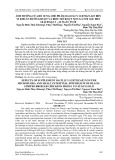
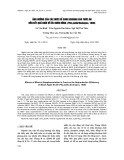
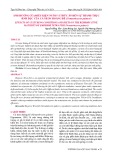
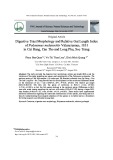
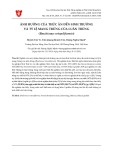
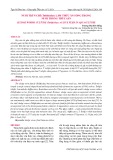
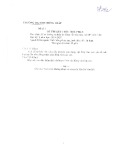
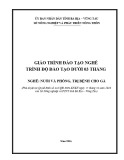
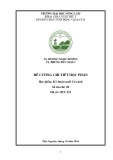




![Giáo trình Sản xuất giống tôm nước lợ, mặn (Trung cấp/Cao đẳng) - Trường Cao đẳng nghề Trà Vinh [Mới nhất]](https://cdn.tailieu.vn/images/document/thumbnail/2025/20251115/kimphuong1001/135x160/76031763179346.jpg)

